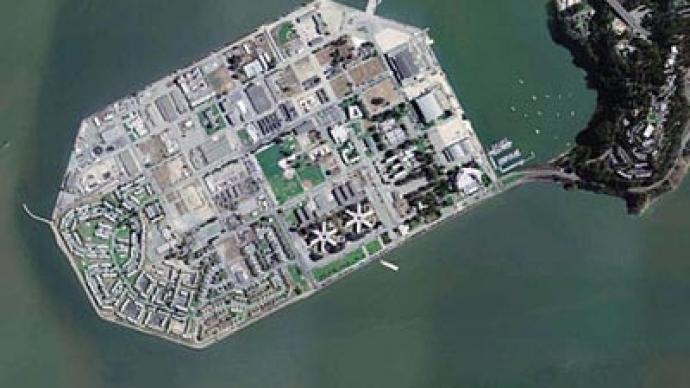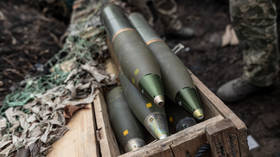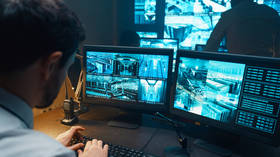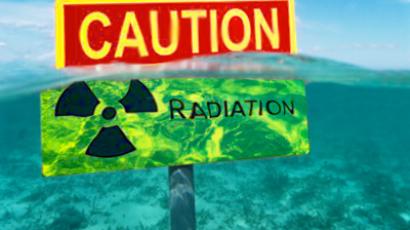'Treasure' island? Radioactivity reported on San Francisco isle

The city of San Francisco plans to convert former Naval base 'Treasure Island' into a residential neighborhood, but new reports by the US Navy and public health officials suggest the island may be more radioactive than previously believed.
Construction is set to begin on a planned 20,000-person high-rise community in 2013, right in the middle of scenic San Francisco Bay. Treasure Island, whose former facilities included a training center for radioactive decontamination, is already the site of multiple recreation centers and home to 2,500. But recent reports have put the city’s lofty plans for the manmade island on hold.While the past use of the island as a naval site is public knowledge, new reports compiled by civilian investigators hired by the Navy have revealed that radioactive exercises at the base were more extensive than previously revealed.The new Navy report and several emails cite numerous concerns from public health officials over the actual levels of leftover radioactivity, San Francisco-based nonprofit news publication The Bay Citizen reported.New investigations have revealed that gun sights on Navy ships containing radioactive material were routinely repaired there. Several ships from the Pacific fleet that may have been contaminated by radiation from US nuclear bomb tests also underwent refits at the island.The report showed that the Navy was so concerned about radioactive contamination on the island at one point that it built a ‘counting room,’ which would measure whether personnel had been overexposed to radiation.The Navy previously revealed that the island was home to training programs on how to decontaminate radioactive ships. A mock-up ship, the USS Pandemonium, was repeatedly doused with radioactive material and cleaned by Navy trainees. The Navy claimed that the material used on the ship was not highly radioactive, and dissipated within weeks.But a classroom spill in 1950 prompted a cleanup, and 200 barrels of contaminated material were dumped into the ocean. When the Navy cleaned up the island in 1997, they disposed of the remains of the USS Pandemonium at an undisclosed location, and declared the former training sites clear without testing them for radiation. The Navy has yet to reveal the location of the scrapped USS Pandemonium.The Navy is selling the island to the city of San Francisco for $105 million, prompting health inspectors to press the Navy for more details after discovering contaminated soil areas that had previously been declared clean. In December 2010, Navy contractors excavated and removed 16,000 yards of contaminated dirt, some with levels of radioactivity up to 400 times the Environmental Protection Agency’s limit for human exposure.In another incident in August 2011, the Health Department raised concerns that a contracted Navy cleanup crew may have accidentally exposed children on the island to radioactive dust at a Boys & Girls Club and a child development center.The Department of Toxic Substances Control, a separate agency also monitoring the cleanup, maintains that the children were never exposed to radiation. It echoed the Navy’s claim that much of the island is safe for final transfer to the city of San Francisco, citing the Navy’s 2006 report, 'Final Treasure Island Naval Station Historical Radiological Assessment.'Overall radiation levels on the island are only slightly higher than the exposure one would receive in a typical backyard, and do not pose a threat to the planned community, nor to the residents already living there, the Navy and the Department of Toxic Substances Control said.But health officials and activists argue that those assessments are premature, as the contractors hired to remove waste based their efforts on the 2006 report, which health officials consider erroneous in light of recent developments.Stephen Woods, an environmental cleanup manager for the public health department, wrote in a 2011 memo that “the large volume of radiological contaminated material, high number of radioactive commodities, (individual items or sources,) and high levels of radioactive contamination … have raised concerns with the CDPH (California Department of Public Health) regarding the nature and extent of the radiological contamination present at Treasure Island.”By May of that year, over 1,000 truckloads of radioactive waste had been removed from the island, with more to go, Woods wrote, concluding that such a massive cleanup operation would certainly undermine the Navy's 2006 report. The island is therefore much more radioactive than the Navy had previously acknowledged, he said.“That amount of radium found to date cannot be explained by gauges, deck markers and decontamination activities,” he wrote.














